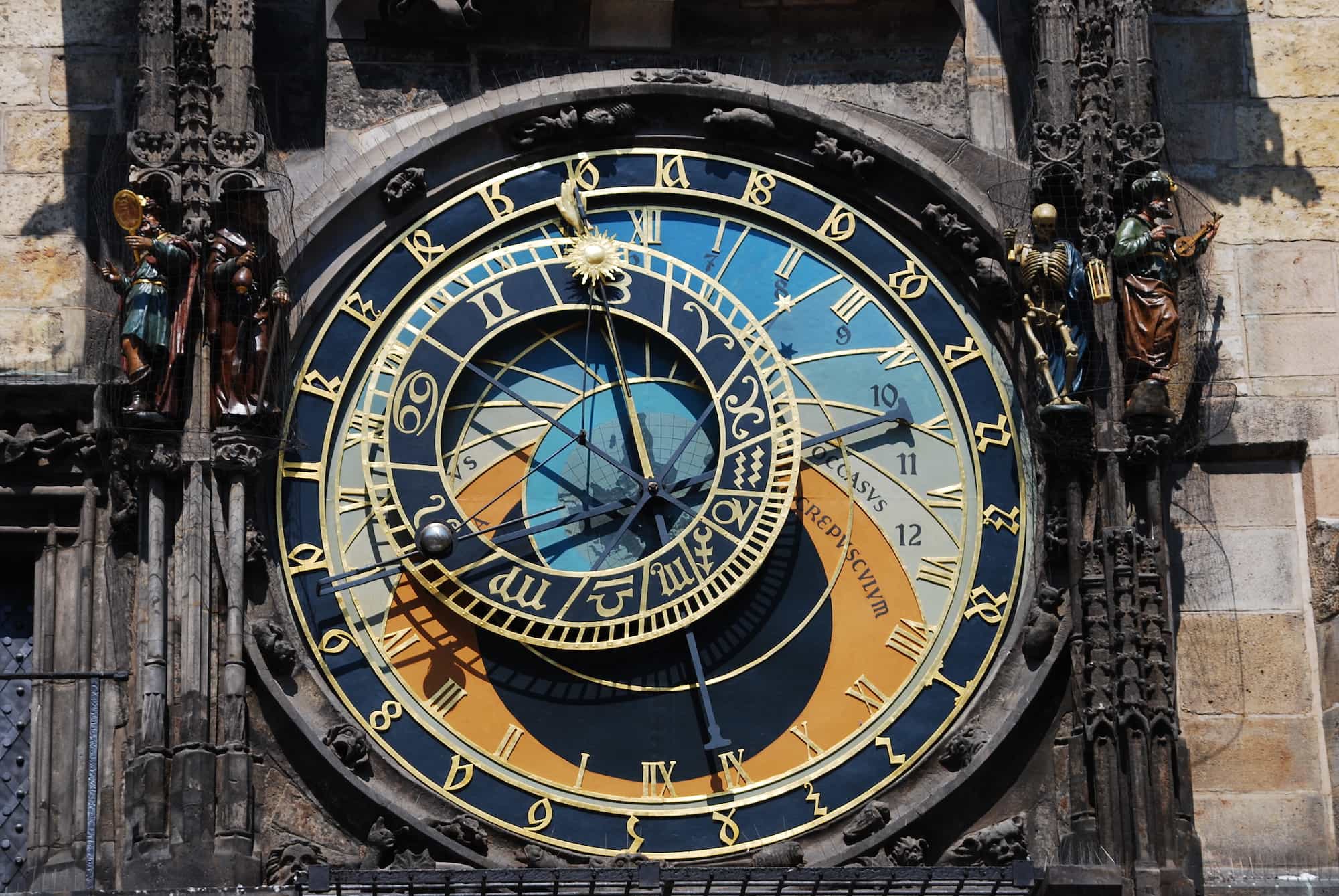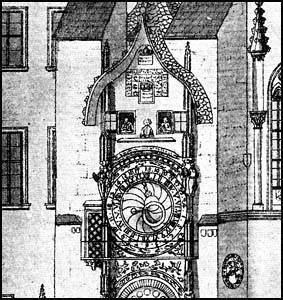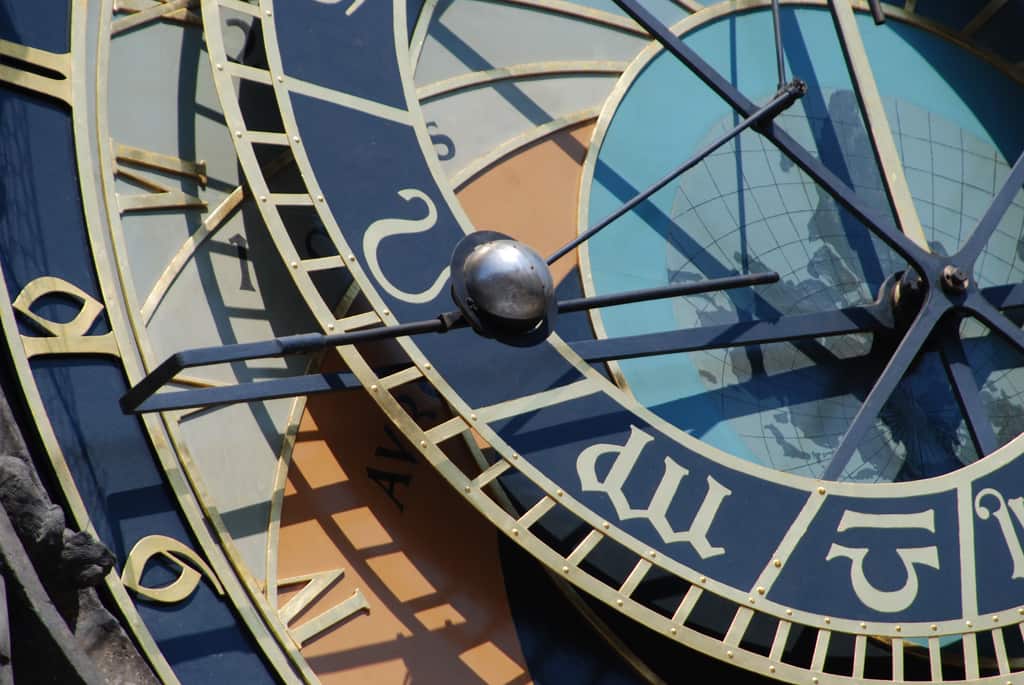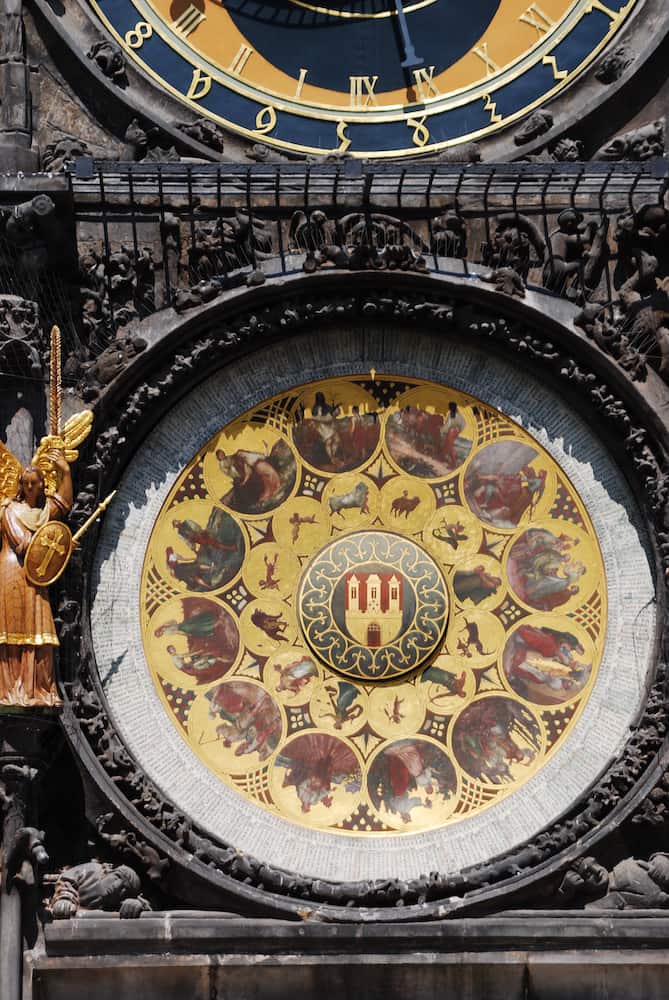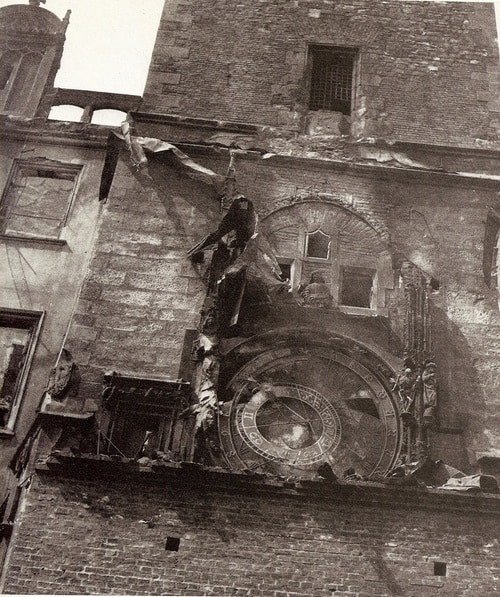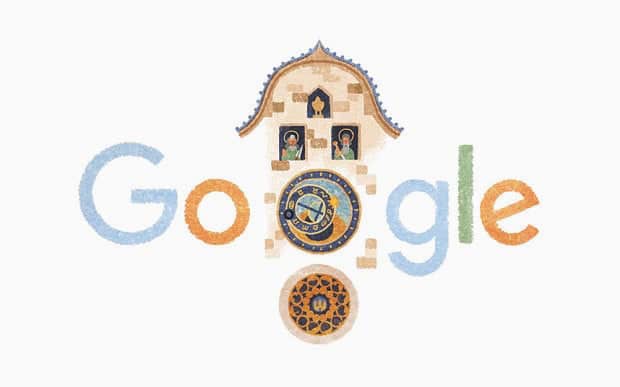As we wrote a few weeks back, at the dawn of the 15th century much of Europe was divided into small, competitive city-states. Large-scale trading across the continent brought newfound wealth, and different regions used their resources to invest in architecture and arts, building incredible cathedrals and palaces. Others across Europe, however, put their wealth into the new field of mechanical horology, creating clocks as city centers that stand to this day. In the second installment of Time Off the Wrist, we took a look at one of the greatest examples of this—the Zytglogge of Bern, Switzerland. Today, we’re traveling 500 miles northwest to the great Prague Orloj, or the Astronomical Clock of Prague, in the heart of the Czech Republic.
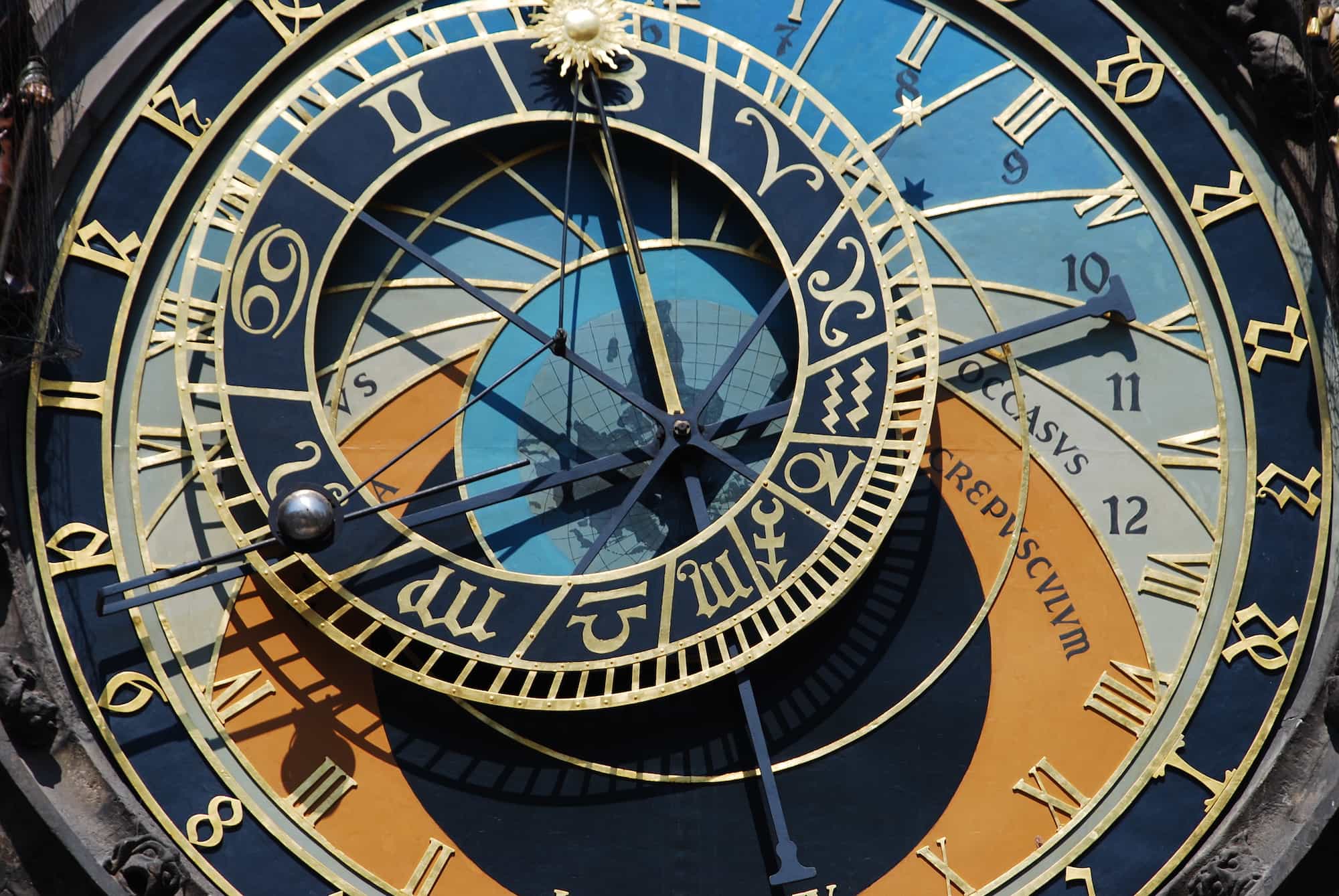
As a center of commerce and culture for centuries, Prague was the thriving, cosmopolitan heart of the Kingdom of Bohemia. Its position as a crossroads of north and south, east and west had made Bohemia the most powerful kingdom in the Holy Roman Empire by the dawn of the 15th century, elevating their king Wenceslas IV to the imperial throne.
The wealthy traders and nobles of Prague parlayed this increased wealth and power into great monuments throughout the city—expanding the central St. Vitus’ Cathedral with an ornate new interior, completing the massive Charles Bridge across the Vlatva river, and chief of all, a cutting-edge addition to the south wall of the Prague town hall. The Orloj, as it was dubbed, was commissioned by the city council in 1410 and constructed by two of the finest horologists of their generation: clockmaker Mikuláš of Kadan and Jan Šindel, head of mathematics and astronomy at Prague’s Charles University.









 Featured Videos
Featured Videos




